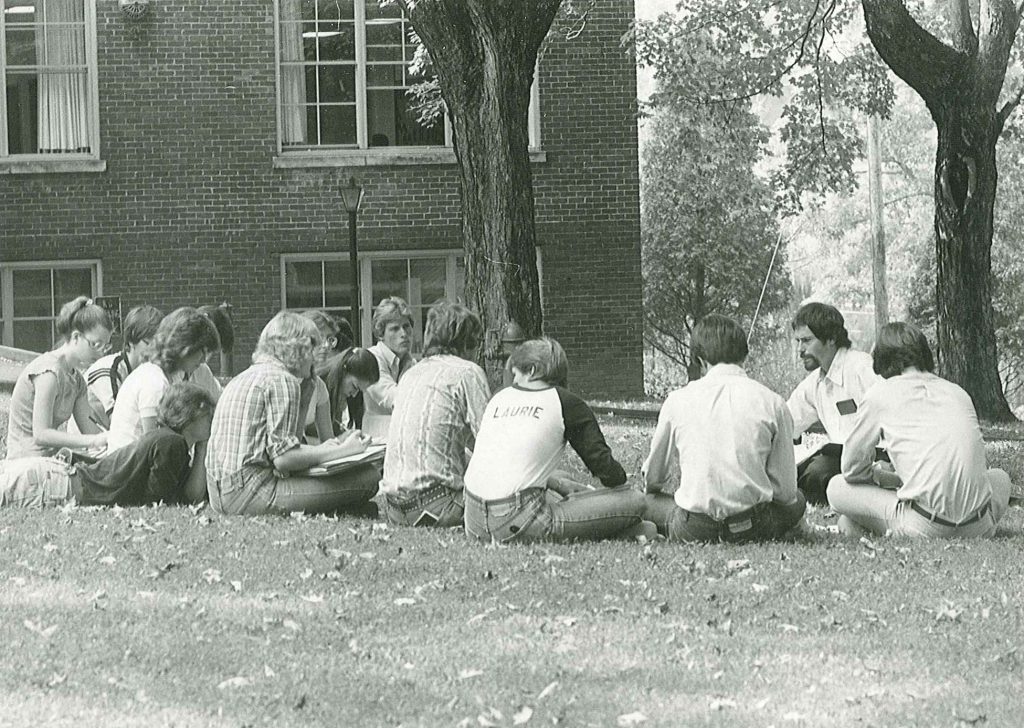“What does it mean to be human?” The Milligan College Humanities program is a unique four-semester course sequence that combines art, literature, philosophy, theology, and more to help students grapple with this key question. Almost every undergraduate student who passes through Milligan participates in this course sequence, Milligan’s alternative to taking separate history, literature, and art classes to satisfy general education requirements. The 2018-2019 academic year marks the 50th anniversary of the program, which over the intervening years has become a central part of the Milligan experience. As part of the celebration, The Holloway Archives at Milligan College has opened an exhibit on the history of the Humanities program in the lobby of the Gregory Center.
The exhibit is divided into four sections. The first is a timeline of the development of the program, from 1965 when a restudy of the general education requirements began, and 1968 when the program began its first year, to 2018 when the Master of Arts in Humanities began its first year. The second section walks through the founders of the program, with photos of beloved long-time humanities faculty and others. Alumni and current students will recognize many faces in these archival photos. The third section covers the Humanities European Study Tour, a faculty-led tour of Europe that began in 1971 and continues to the present. Several yearbook spreads document the development of this popular study abroad option, including years when the group traveled around Europe in a van and camped. The last section includes articles about the Humanities program from The Stampede, including an amusing cartoon of what one’s brain looks like after studying humanities!
“I hope students and alumni alike come by Gregory to see the exhibit,” says Katherine Banks, College Archivist and curator of the exhibit. “I think they will all find something interesting in it, whether it’s a photo of a favorite professor or seeing what the Humanities experience was like for students thirty or forty years ago.” The physical exhibit will be displayed in the Gregory Center lobby throughout the month of April. A digital version of the exhibit is available for viewing on MCStor, Milligan College’s digital repository.



